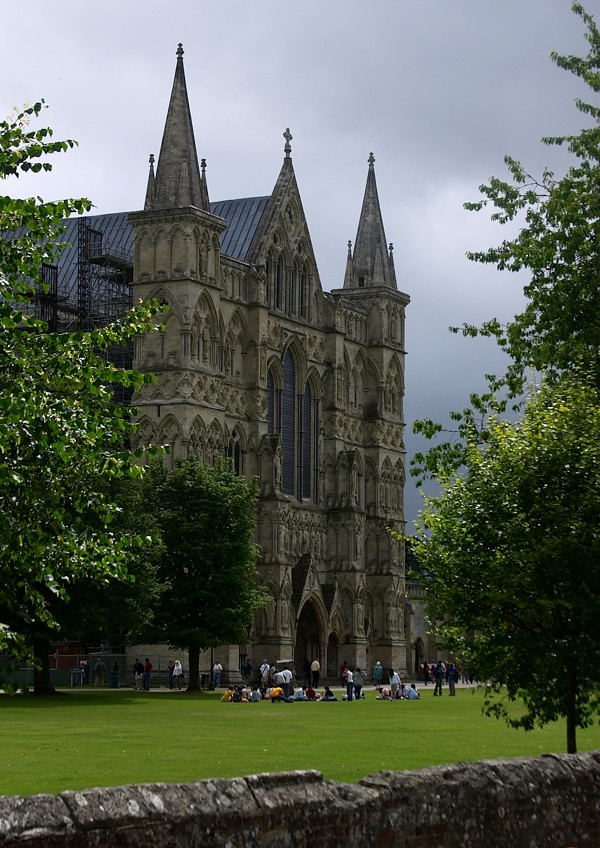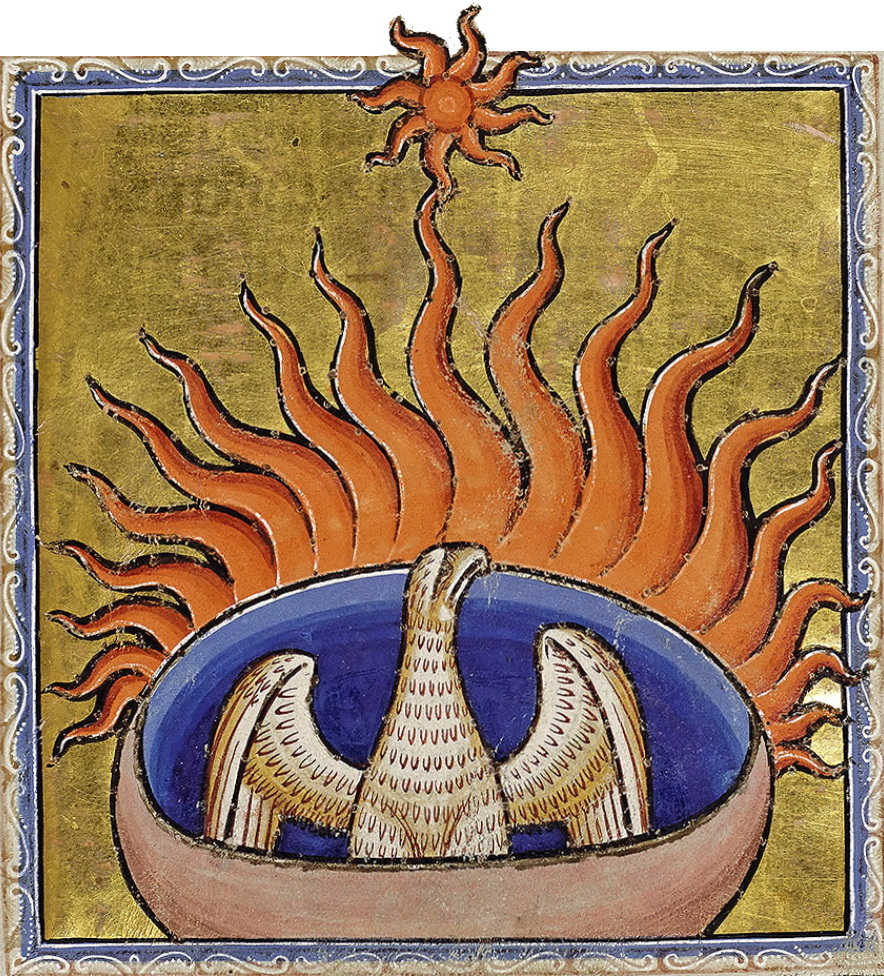
The Medieval period represents, for Western man, a kind of germinal gestation of the Spirit in the form of an actualized Christian civilization, one which was fully in accord with Tradition, as far as it was able to go. We know this because, for the neo-pagans, it is too “Christian” & for the neo-Christians, it is too “pagan”. Something with this many enemies has to have more going for it than meets the eye, & when one begins to dig in its archives, or leave through its holy books, or experience its ghosts in an old castle, you get a cold breath of fresh air that refreshes the heart.
I wrote in an earlier post:
Cologero’s translations have provided this gem, from de Giorgio:John of Salisbury was a minor church official in England, & yet he ably defended the classical ideal (expressed in Seneca and Cicero) of the philosopher: the lover of wisdom has to live as if these things (the Tao) were actually true, subordinating earthly desires and concerns to a higher goal. To this end, one studied grammar as the foundation, proceeded to logic-dialectic to pursue the ends of what was begun, and summarized this rhetorically in the “living flame” of a common chase after the Logos. Errors in grammar (mixing categories of speech) are analogous to conflating Spirit & matter, or of admixing them (eg., “race” = the spirit). Errors in logic are analogous to perverse twisting of the Logos inside one’s self (eg., it’s some one else’s fault). Errors in rhetoric are analogous to not being able to judge the spirits, following will’o'the’wisps (eg., Equality as God). Therefore, the educated man pursues a formal calling (for which he is more harshly held to account) in learning to tell what is true from what is false, & what is good from what is better or Best. The uneducated man has to look to his betters for guidance (as indeed does the educated man, as sainthood or herodom actualizes liberal studies in real freedom).
“We could also call it “intuition” although no psychological quality is given to this term: the psyche in fact is below the spirit, the intellect, the heart—these three terms denoting, under three aspects, the same type of integrative activity of the divine. The spirit expresses the direct integration whose absolute type is the divine breath, the intellect expresses the cognitive permeation, the heart expresses radiant receptivity: by means of the first, one is elevated, with the second, absorbed, in the third, one is welcomed and realizes himself. Representing here a vertical axis, the spirit is the peak, the intellect the base, the heart the center that gathers the two extreme points and extends them, prolonging them horizontally, hence the Cross as radiant symbol of universality and unifying centrality.”
The intellect, the heart, and the spirit are One...
Where is anyone of John’s stature today? If he exists, he is certainly not holding an official post: that is the difference between then & now.
Because of the chiasm formed by earth and heaven, in which the material world becomes the divine drama or staging ground for salvation, and in which whatever you bind will be bound, whatever loosed, loosed, the Hermetic method is to continue the medieval project of christening earth and humanizing heaven: that is, earth must be baptized, & heaven taken by storm. Rather than effacing human nature, personality, and the Logos as it sustains the “shields of the earth”, it overcomes General Law by drawing the entire human person up into the Divine order, simultaneously actualizing and drawing down the celestial powers, as was the original intent of God.
One only has to compare Eastern Orthodox icons to the Book of Kells to appreciate the difference in Western spirituality, which very early on committed itself to a playful acknowledgement and sublimation of the natural order. It was no accident that Pelagius hailed from Ireland, or that the Irish monks “saved Western classical civilization”. Whereas the East has been more heavily influenced by the idea of breaking out of the charmed, magic circle of the Fall, the West has been more willing to run the risk of damnation by insisting on a full recognition of the Logos in the material Creation. This does not mean that Eastern Orthodoxy is opposed to the Western Church, far from it. It is simply to point out that they are, in the end, returning to the same place, from a different point, like radii back to the center of the circle. The French hermetic tradition which inspired Tomberg openly admits and acknowledges the importance of co-inherence of the two worlds, which are One. Charles Williams (who drew attention to the term) was influenced by some of the same circles as Tomberg was.
So it is not merely a matter of all Westerners re-converting to the Eastern Church (although perhaps this is how God shall choose to re-unify?), but rather of rediscovering that one’s lines have “fallen in pleasant places & that I have a goodly heritage” (Psalms). In re-reading works such as John Cardinal Newman’s The Idea of the University, or John of Salisbury’s Metalogicon, or perhaps Boethius’ Consolations, we can see the Western, classical yearning for the order of the City, for Tradition, for the true & original religion, which pre-existed the Christ, but was re-energized by the appearance of its crown prince.
I have pointed out that Grammar corresponds to Spirit, Logic to Logos, and rhetoric to the archetype or Father. This is how liberal learning can again be brought into a right relationship not merely with right Reason, but with the embodied and personal Good, which is a super-Person:
If we were relating this to a knowledge of castes and Order (including internal order) we would say that the Spirit correlates to Fact, the Heart to Logic, and the Intellect to Rhetoric (for true self-consciousness is consciousness of the Master inside, allowing domination of both Self and Destiny). The Spirit initiates, or factualizes the supernatural; the Heart has its inner logic that we must learn to listen to; the Intellect realizes and epitomizes the power of the Invisible made Visible, the fruit of what has gone before.In this way (surprisingly) the Spirit “chiasms” (or inverts by crossing a boundary in a creative way, the opposite of revolution, which is not fecundate) with “Fact” (which we tend to identify somewhat strangely with pure matter, the Son who is “matter incarnate” is seen as the heart of the worlds with a logic that transcends analytical power alone, and the Father is not the brutal demi-God who oppresses, but rather the Archetype or “Ground”, the “infinite possibility” Himself, out of which all proceeds.
Tomberg has pointed out that pantheism, emanationism, demi-urgism, and creation ex nihilo all correspond to various aspects or levels of Being, all true, which can be properly coordinated in the One.
This is why the medievals did not mind reading the Timaeus, which frankly teaches that there is a demi-Urge, or perusing the Stoics (whose spirituality they did not share as much in common with as the theurgic tradition of Plotinus), which emphasizes the unity of the Logos in the natural world (pantheism), or in picking up Iamblichus or Plotinus (whose systems of theurgy were incorporated into the Roman mass). They held all this together with the Grammar of Dogma, which demanded that the mystery of the Spirit as it actualizes in matter is the foundation point for slowly climbing Parnassus and reaching the heights which in earlier ages may have been scaled more swiftly or dramatically by avatars and heroes who shared a small portion of the charisma of Christ.
Now that Christ has come, the real work begins! Rather than rely on being born as a “son of God” dedicate to Apollo (like Pythagoras), or being conceived by the interaction between Olympian celestials and mortals (like Hercules), we have been fully restored. But being fully restored, the work has only just begun, as it is now our calling in this darkest and brightest of all Ages to achieve on the inside, project on the outside, and re-echo the divine nuptials that have been consummated between Heaven and Earth. This is the chivalric destiny the Middle Ages glimpsed and began to achieve, & this is what each must set themselves again to do.
To that end, it is encouraging that, even in John of Salisbury’s “bright age of Faith”, he complains that false philosophers and fake Christians abounded, that learning was already turning dim, that madness was loose upon the earth in the form of institutional folly, and that corruption too often triumphed over virtue (he and Thomas Beckett were allies). Maybe the Age we live in, as Cologero has said, has its own unique advantages, and that much can be done in candlelight, away from the hustle and bustle of a world that (even at its best) was ambiguous about accepting the Lordship of the King.
